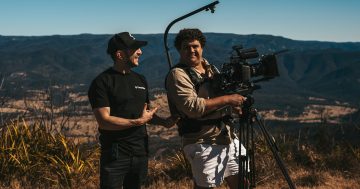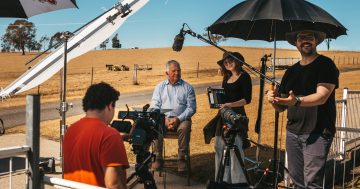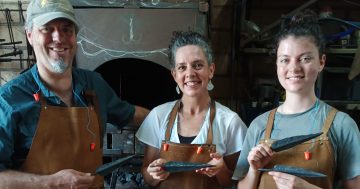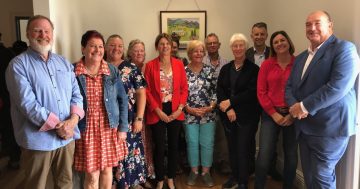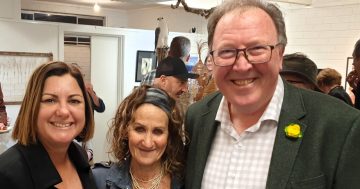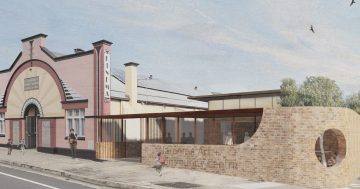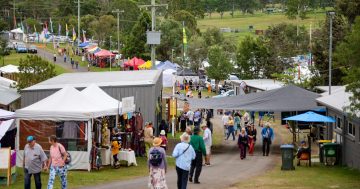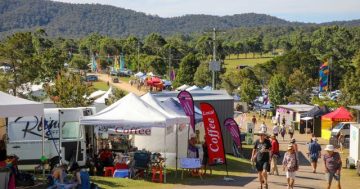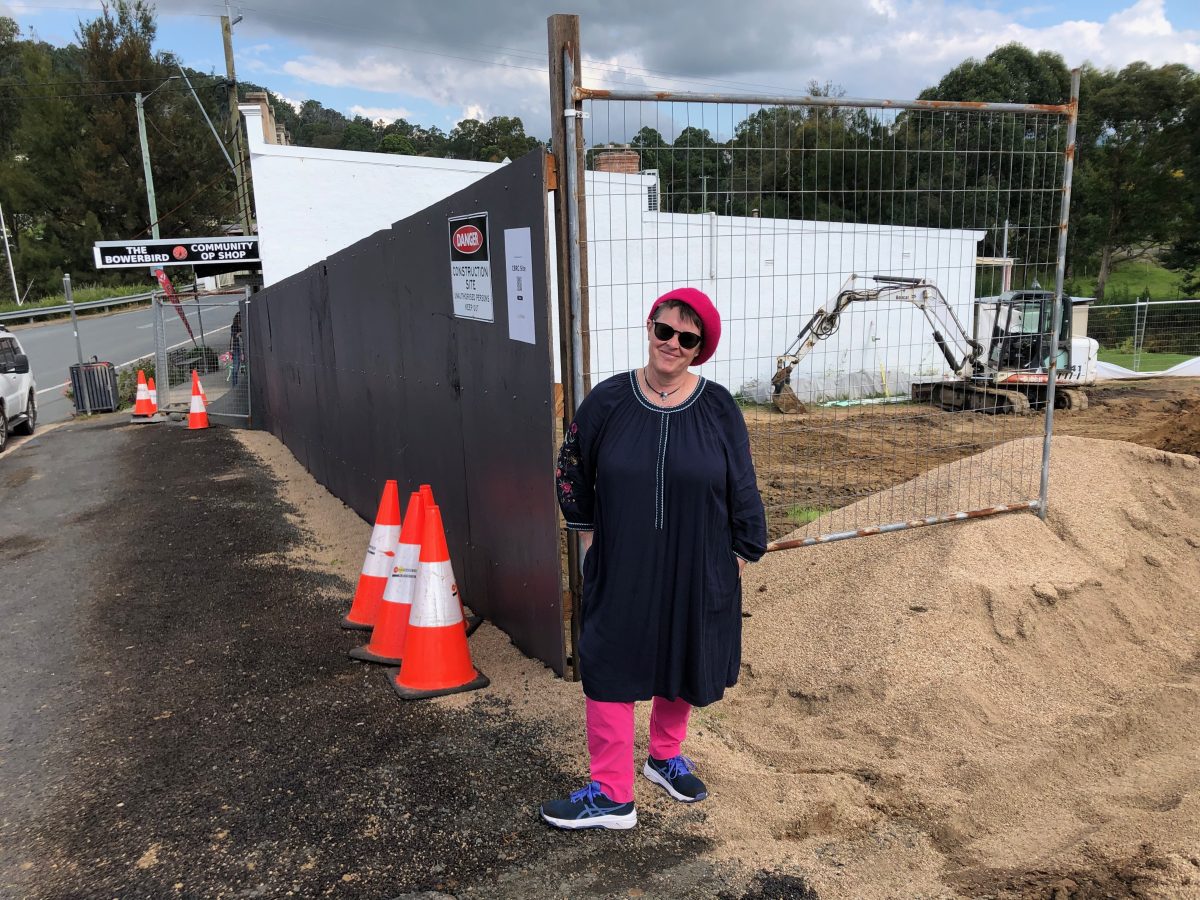
Cobargo Bushfire Resilience Centre vice-chair Rhonda Ayliffe is delighted that construction has started. Photo: Marion Williams.
More than four years after the Black Summer bushfires raged through the historic village of Cobargo, ground was finally broken on the Cobargo Bushfire Resilience Centre (CBRC) in April. Its torturous path to reach that point is a tale of hope and resilience.
The bushfire was still burning as Brian and Mary Ayliffe wondered how the community could fix the devastation surrounding them. CBRC vice-chair Rhonda Ayliffe said her father mused that if he donated the block of land in the village centre they had owned for nearly 80 years, perhaps a museum would be built.
“That was how it actually began, and I was pulled in from day one,” Ms Ayliffe said.
It had to be something to give hope, and by late 2020, the idea was formed.
“Architects Takt Studio listened to the stories of what this was meant to do and nailed it,” she said. Also central to the project were seed funding from the Cobargo Community Bushfire Recovery Fund and support from then-local MP Andrew Constance.
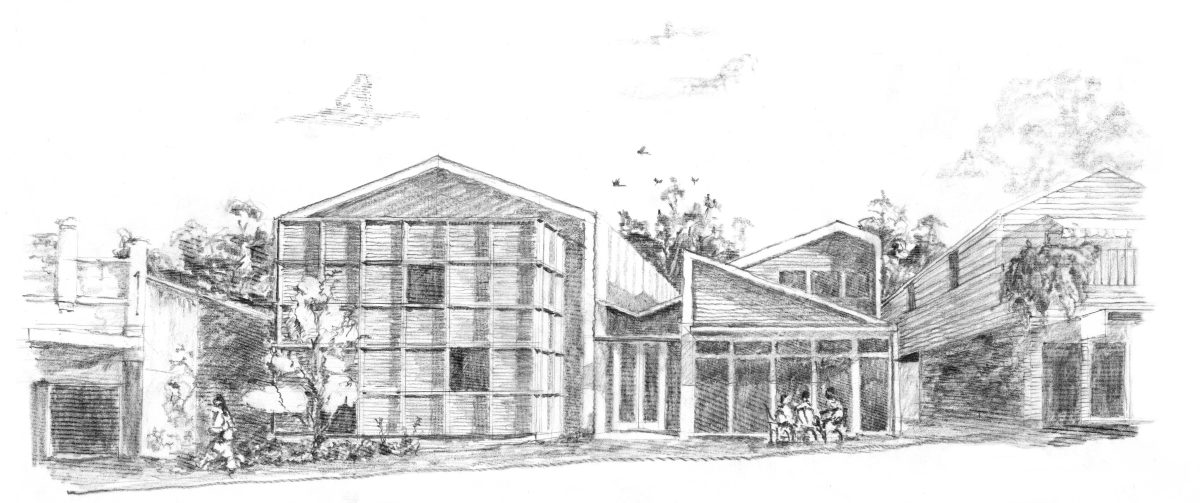
The initial grant application design for the Cobargo Bushfire Resilience Centre. Photo: Takt Studio for Architecture.
Ms Ayliffe said the state and federal governments announced “high-stake, competitive” Bushfire Local Economic Recovery (BLER) grants.
“We were writing the application 24/7 through December 2020 and January 2021.”
They were advised that they were successful in June 2021, but they did not receive the trust deed until December 2021.
By then, COVID-related global supply chain problems and the rebuilding task after the bushfires had seen costs spiral and shortages of building materials. They had to descope the CBRC.
They submitted the development application to Bega Valley Shire Council in August 2022. Approval took nine months. Meanwhile, costs continued to rise.
In November 2022, the NSW government invited BLER infrastructure projects to apply for additional funding to enable completion. The deadline for completion was also extended by two years to June 2025. The CBRC was again successful but did not receive the trust deed until March 2024.
The committee meanwhile worked on the reports needed to move towards the tender process.
“We awarded the tender in March 2024 and started work that month. We finally broke ground on 17 April,” Ms Ayliffe said.
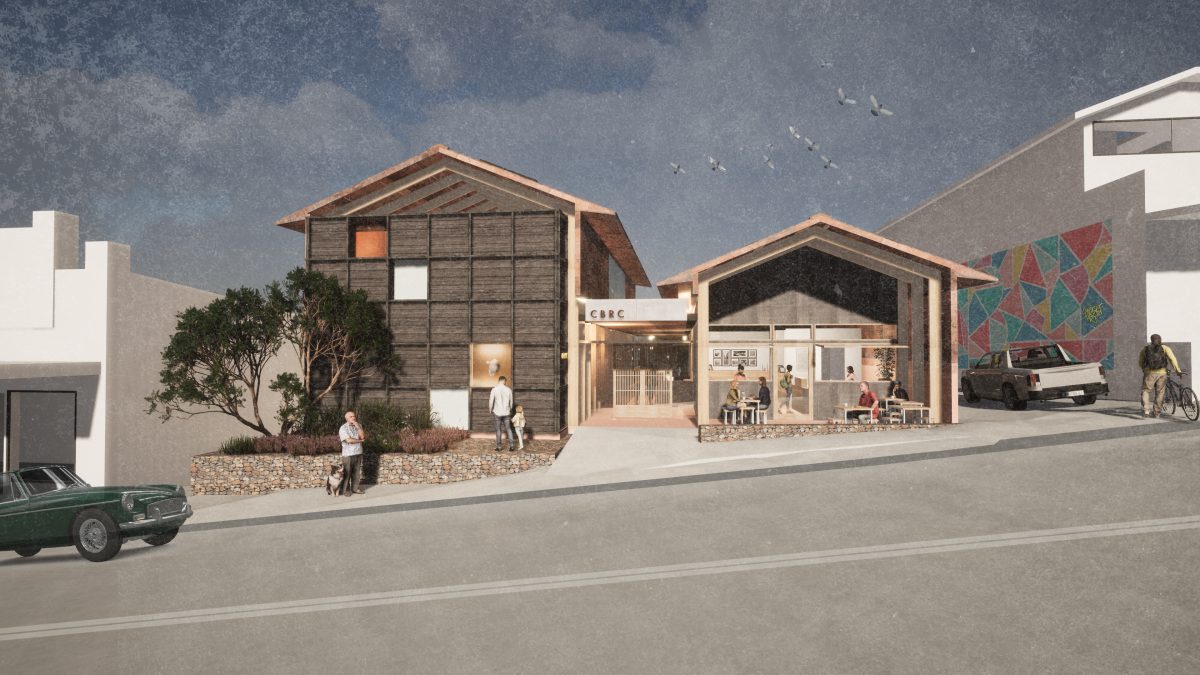
A sketch of the final design for the Cobargo Bushfire Resilience Centre after adjustments for heritage considerations and descoping. Photo: Takt Studio for Architecture.
Every element of the CBRC tells the story of Cobargo and its volunteers and, by extension, the story of Black Summer and volunteers in emergencies.
“It is a pebble in the pool with Cobargo the centre of everything,” she said.
The spine of the CBRC is dedicated to Rural Fire Service (RFS) volunteers and will have items on display, like the McLeod tool, telling the story of firefighting in Australia.
“The RFS yellow overalls are probably one of the most widely recognised things in Australia, so when people come to the centre, they will connect with it,” Ms Ayliffe said.
It will include a small exhibition space, a commemorative courtyard, a retail outlet for work by local artisans with the themes of resilience and hope, and a theatrette with capacity for 30. It will screen changing programs telling the story of the Badja Forest Road bushfire with an underlying message of hope.
Ms Ayliffe said they are not after shock value, but some material will be hard-hitting.
“Hope doesn’t mean you gloss over the horrible parts. Hope means you go through that, come out the other side, and help people to do the same.”
As well as several short videos for the theatrette, the CBRC commissioned a 75-minute documentary. It was funded by the state and federal governments’ Bushfire Community
Recovery and Resilience Fund.
Cobargo’s story is also being told elsewhere.
The National Library of Australia has made more than 60 oral histories, some of which are already available online. The phone booth that melted in the fire is in the National Museum of Australia’s Great Southern Land display, alongside a bent telephone pole from Cyclone Tracy.
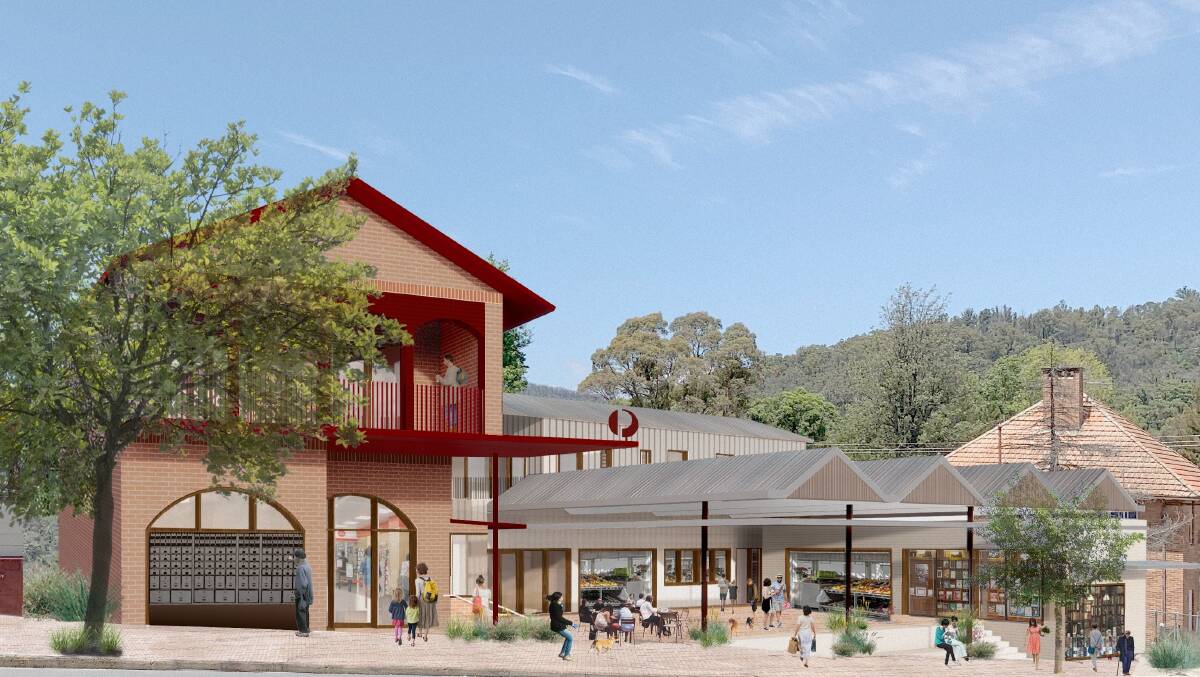
Image of part of the planned rebuild of Cobargo’s CBD. Photo: Supplied.
Meanwhile, rebuilding the remainder of Cobargo’s CBD is expected to start this month.
John Walters, chair of the Cobargo Community Development Corporation, said getting businesses and retail back on the main street is the key to unlocking Cobargo’s future.
Cobargo Quaama Business Recovery Group chair Shona Taranto said the town remains open for business with its rich artisan landscape.
“They have stuck it out through thick and thin since the fires, COVID, this tough economic environment and must now contend with construction activity.”
Sadly, the original patron of the CBRC, Mary, passed away just before the tender was announced.
“She always believed we would get it done. This is her lasting legacy to the town that she loved so much,” Ms Ayliffe said.







